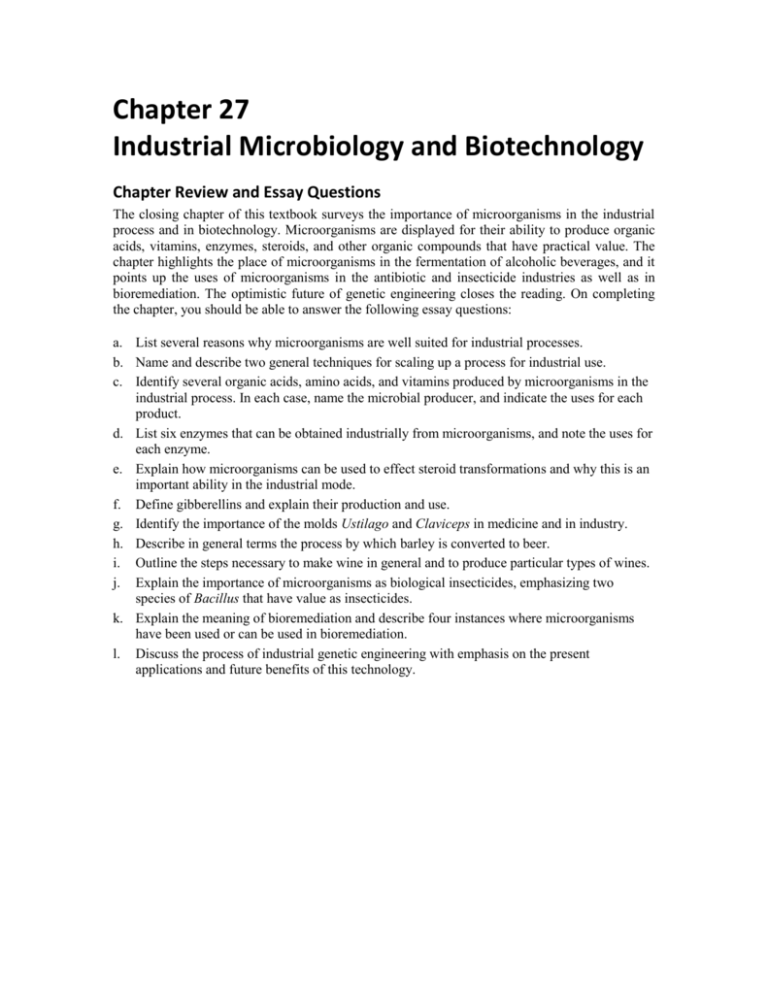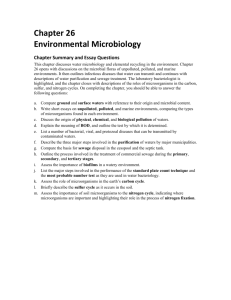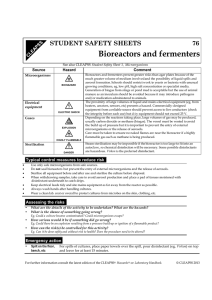Chapter 27: Industrial Microbiology and Biotechnology
advertisement

Chapter 27 Industrial Microbiology and Biotechnology Chapter Review and Essay Questions The closing chapter of this textbook surveys the importance of microorganisms in the industrial process and in biotechnology. Microorganisms are displayed for their ability to produce organic acids, vitamins, enzymes, steroids, and other organic compounds that have practical value. The chapter highlights the place of microorganisms in the fermentation of alcoholic beverages, and it points up the uses of microorganisms in the antibiotic and insecticide industries as well as in bioremediation. The optimistic future of genetic engineering closes the reading. On completing the chapter, you should be able to answer the following essay questions: a. List several reasons why microorganisms are well suited for industrial processes. b. Name and describe two general techniques for scaling up a process for industrial use. c. Identify several organic acids, amino acids, and vitamins produced by microorganisms in the industrial process. In each case, name the microbial producer, and indicate the uses for each product. d. List six enzymes that can be obtained industrially from microorganisms, and note the uses for each enzyme. e. Explain how microorganisms can be used to effect steroid transformations and why this is an important ability in the industrial mode. f. Define gibberellins and explain their production and use. g. Identify the importance of the molds Ustilago and Claviceps in medicine and in industry. h. Describe in general terms the process by which barley is converted to beer. i. Outline the steps necessary to make wine in general and to produce particular types of wines. j. Explain the importance of microorganisms as biological insecticides, emphasizing two species of Bacillus that have value as insecticides. k. Explain the meaning of bioremediation and describe four instances where microorganisms have been used or can be used in bioremediation. l. Discuss the process of industrial genetic engineering with emphasis on the present applications and future benefits of this technology.











